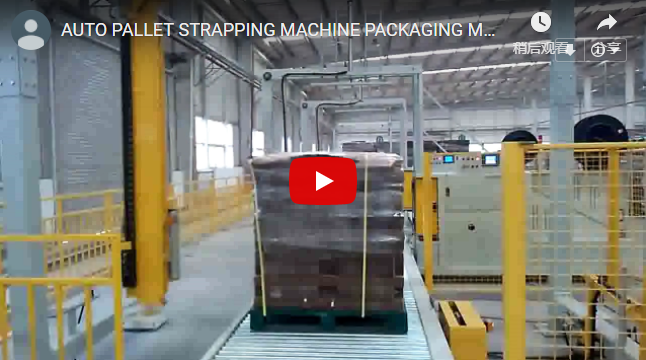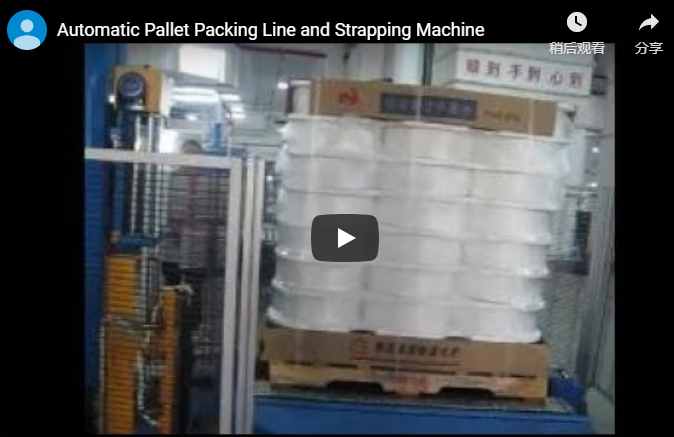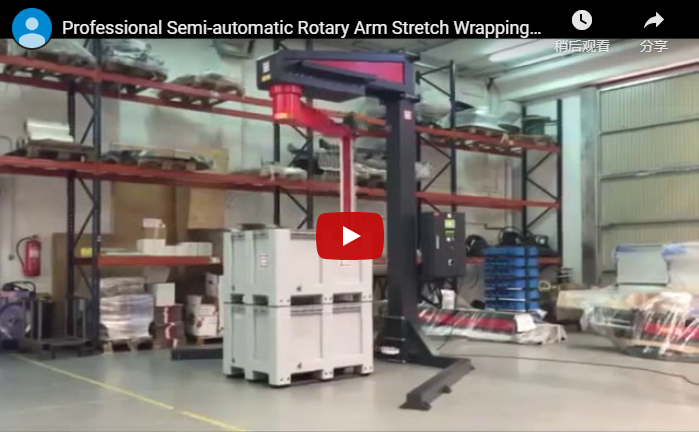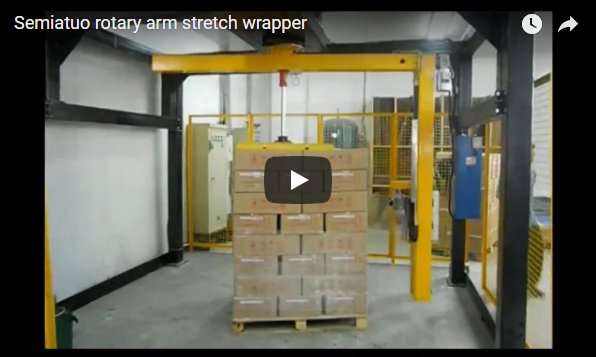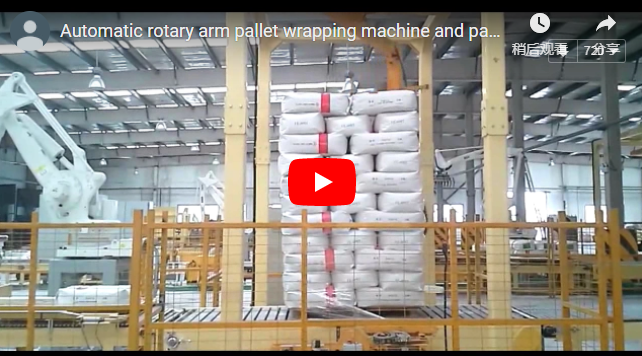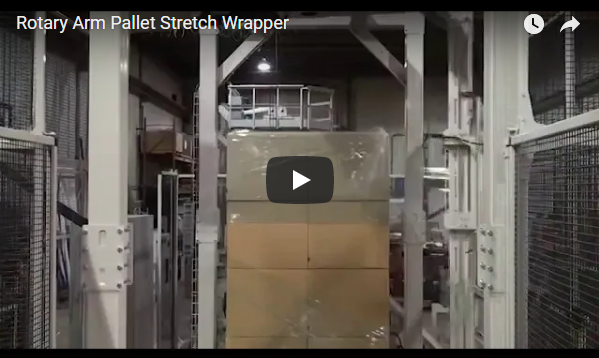Double Rotary Arm Stretch Wrapping Machine: Boosting Throughput and Stability in Palletizing
In high-volume manufacturing and distribution environments, the efficiency and reliability of end-of-line packaging operations are critical. When standard turntable stretch wrappers become a bottleneck or struggle with unstable loads, the double rotary arm stretch wrapping machine emerges as a powerful solution. This guide delves into the technical advantages and practical applications of this specialized equipment, offering insights relevant to operations managers and packaging engineers.
1. Understanding the Double Rotary Arm Advantage
Unlike traditional turntable wrappers where the pallet spins, or single rotary arm machines, a double rotary arm stretch wrapper keeps the pallet stationary. Two synchronized arms, equipped with film carriages, revolve around the load to apply the stretch film.
- Core Benefit: This stationary approach is fundamental for wrapping loads that are exceptionally heavy, tall, lightweight, or inherently unstable. Spinning such loads on a turntable can lead to product shifting, potential damage, or complete load failure.
- Mechanism: The dual arms typically operate 180 degrees apart, effectively applying film from two points simultaneously during their rotation. This balanced force application further enhances load stability during the wrap cycle.
2. Key Technical Specifications and Operational Features
While specific configurations vary, most industrial-grade double rotary arm wrappers share common features designed for performance and durability:
- Throughput Capacity: Significantly higher than single-arm or turntable models, often capable of handling 60-100+ pallets per hour, depending on load size and wrap pattern complexity.
- Rotational Speed: Arms can rotate at high speeds, often adjustable via Variable Frequency Drives (VFDs) to match production line speed and load characteristics.
- Load Handling: Designed for standard pallet sizes (e.g., 40"x48", 48"x48") but often configurable for larger or custom dimensions. Weight capacities typically range from 4,000 lbs to heavy-duty applications exceeding 6,000 lbs.
- Film Delivery System:
- Powered Pre-stretch: Essential for film economy and load containment. Ratios typically range from 150% to over 300%, stretching the film before application to maximize yield and holding force.
- Adjustable Wrapping Tension: Electronic controls allow precise tension settings for different parts of the load (e.g., tighter wrap at the bottom, looser at the top).
- Control System: PLC-based controls with Human-Machine Interfaces (HMIs) allow for:
- Multiple Stored Wrap Programs: Tailored cycles for different product types or load configurations.
- Adjustable Arm/Turntable Speeds (if applicable for indexing).
- Variable Film Carriage Up/Down Speeds.
- Top Sheet Integration Control.
- Automation Features:
- Automatic Film Attach, Cut, and Wipe/Clamp systems minimize operator intervention.
- Integration with upstream and downstream conveyors for fully automated lines.
- Safety: Light curtains, safety fencing, emergency stops, and interlocked access doors are standard safety inclusions.
3. Maximizing Throughput in High-Volume Operations
The primary driver for adopting a double rotary arm system is often the need for increased packaging speed.
- Simultaneous Application: With two arms wrapping concurrently, the cycle time per pallet is dramatically reduced compared to single-arm systems.
- Reduced Bottlenecks: In facilities processing a high number of pallets per hour, these machines prevent the stretch wrapping station from becoming a limiting factor in overall line efficiency.
- Operator Experience: "From the floor, the speed difference is immediately noticeable," notes a Plant Manager using a dual-arm system. "We went from constantly waiting on the wrapper to having it easily keep pace with our fastest production runs. The automation features also freed up personnel for other tasks."
4. Tackling Challenging Loads: Stability and Containment Perfected
The stationary pallet design is the key differentiator when dealing with difficult loads.
- Unstable Products: Tall, lightweight boxes (like empty containers), or column-stacked items that would topple on a turntable can be wrapped securely.
- Heavy Loads: Eliminates the inertia and potential bearing strain associated with spinning very heavy pallets.
- Irregular Shapes: The rotating arms can often better conform to non-uniform load profiles compared to turntable wrappers.
- Consistent Containment: The dual arms ensure even film application and tension around the entire load, crucial for maintaining integrity during transit.
5. FHOPE Solutions: A Practical Example
Manufacturers like FHOPE offer double rotary arm stretch wrapping machines incorporating the features discussed. Their systems are engineered for demanding industrial environments, focusing on:
- Reliability: Robust construction designed for continuous operation.
- Efficiency: Optimized pre-stretch systems to reduce film consumption.
- Customization: Options to tailor machines to specific load sizes, environmental conditions (e.g., cold storage), and integration requirements.
FHOPE's double rotary arm wrappers exemplify how this technology addresses the need for speed and stability in industries like logistics, warehousing, food and beverage, and manufacturing.
6. Integration and Considerations
Implementing a double rotary arm wrapper requires careful planning:
- Footprint: These machines generally require more floor space than turntable models.
- Conveyor Integration: Seamless integration with existing or new conveyor systems is crucial for automated operations.
- Maintenance: While built for durability, the dual-arm mechanism involves more moving parts than simpler wrappers, necessitating adherence to preventive maintenance schedules.
- Operator Training: Familiarization with the HMI, program selection, and safety procedures is essential.
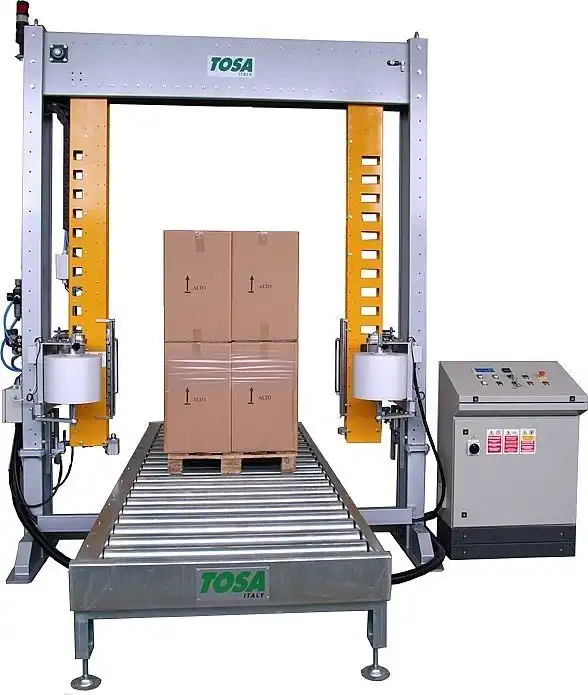
Conclusion: When Speed and Stability Matter Most
The double rotary arm stretch wrapping machine represents a significant step up in automated pallet wrapping technology. Its ability to securely wrap challenging loads at high speeds makes it an invaluable asset for operations prioritizing throughput and load integrity. While requiring a larger initial investment and footprint compared to simpler systems, the gains in efficiency, reduced product damage, and optimized film usage often provide a compelling return on investment for high-volume applications.
For facilities struggling with packaging bottlenecks or unstable loads, exploring the capabilities of a double rotary arm wrapper is a strategic move towards enhanced operational performance.
For more information on stretch wrapping solutions:
https://www.fhopepack.com/Stretch_wrapping_machine.html
Contact for inquiries:
info@fhopepack.com

